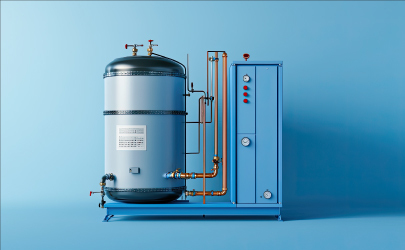The Hidden Engine of Modern Infrastructure: Why U.S. Commercial Boilers Are in High Demand

The U.S. commercial boilers market is being shaped by structural trends in building modernization, sustainability ambitions, and evolving energy standards that are redefining the heating landscape across various commercial sectors. Demand continues to rise steadily alongside the expansion of commercial infrastructure, with offices, educational institutions, healthcare facilities, and hospitality establishments leading the adoption of advanced heating solutions. Within this context, commercial boilers remain essential components of building heating systems, ensuring the consistent and reliable generation of hot water and steam required for everyday operations.
Market momentum is largely driven by new construction in urban centers as well as the retrofitting of outdated heating systems to meet contemporary energy performance standards. According to the U.S. Energy Information Administration, over half of commercial buildings constructed before 1990 still operate legacy heating systems, presenting significant replacement opportunities as operators strive for improved efficiency and reduced emissions.
Condensing boilers have gained significant traction in the market due to their capability to recover latent heat and achieve efficiencies exceeding 90 percent. Their market presence is bolstered by stringent energy regulations issued by the Department of Energy and local codes that prioritize sustainable infrastructure. Educational and healthcare institutions, which operate year-round, have increasingly transitioned to condensing systems to lower utility costs and minimize operational downtime. Likewise, the hospitality sector continues to adopt modular and compact boilers to facilitate flexible load management. Offices account for the largest share of the U.S. commercial boilers market, driven by ongoing expansion in business districts and a consistent demand for centralized climate control. Additionally, warehouse and storage facilities, while representing a smaller segment, are gradually incorporating low-emission boiler solutions, fueled by the growth of e-commerce and the construction of new logistics centers.
Energy diversification stands out as a major theme in the transformation of the market. Natural gas remains the predominant fuel source, accounting for a substantial portion of installed capacity due to its availability and cost-effectiveness. However, the shift toward electrification and hybrid configurations is gaining speed, supported by state-level clean energy initiatives. Electric and dual-fuel boilers are becoming more prominent as businesses seek alignment with carbon reduction targets. In response, manufacturers are expanding their product portfolios to include high-efficiency, low-NOx, and hydrogen-ready boilers to address future decarbonization needs. Technological advancements, particularly through the integration of IoT and smart control systems, are enabling facilities to monitor performance metrics, anticipate maintenance needs, and optimize combustion processes, which leads to reduced operational costs and enhanced equipment longevity.
Healthcare facilities and universities are identified as some of the most resilient end-users, maintaining consistent replacement cycles regardless of economic conditions. Hospitals rely on uninterrupted heating and sterilization support, while campuses depend on centralized systems for large building clusters. Consequently, these sectors present consistent revenue streams for boiler manufacturers and service providers.
The rise in retrofitting projects is another hallmark of the U.S. commercial boilers market, as many older buildings are swapping out non-condensing units for more efficient alternatives in compliance with the DOE's updated efficiency standards. Incentive programs, such as rebates, tax credits, and energy-saving performance contracts, are making modernization more accessible for small and mid-sized businesses, further accelerating market penetration.
Cost considerations continue to influence purchasing decisions, given that initial investment and installation expenses can be substantial. Nevertheless, lifecycle economics favor newer boiler technologies, offering faster payback periods through reduced energy consumption and maintenance savings. Companies like Cleaver-Brooks, Miura America, Fulton Boiler Company, Hurst Boiler & Welding, Parker Boiler Company, and Babcock & Wilcox are focusing on product differentiation through modularity, advanced materials, and adaptive control solutions aimed at meeting end-user expectations for compact designs, rapid start-up capability, and compliance with evolving emission standards.
Competition is intensifying as a result of enhanced service offerings, including remote monitoring, predictive diagnostics, and subscription-based maintenance plans that aim to ensure long-term customer retention. Market growth is further bolstered by trends in urban densification and the increasing need for temperature regulation in mixed-use developments. Public assembly buildings, such as malls, theaters, and community centers, contribute to steady demand, particularly in the colder regions of the Northeast and Midwest. Regional climate patterns significantly influence equipment capacity requirements, with northern states favoring systems rated for higher capacities to effectively manage longer heating seasons.